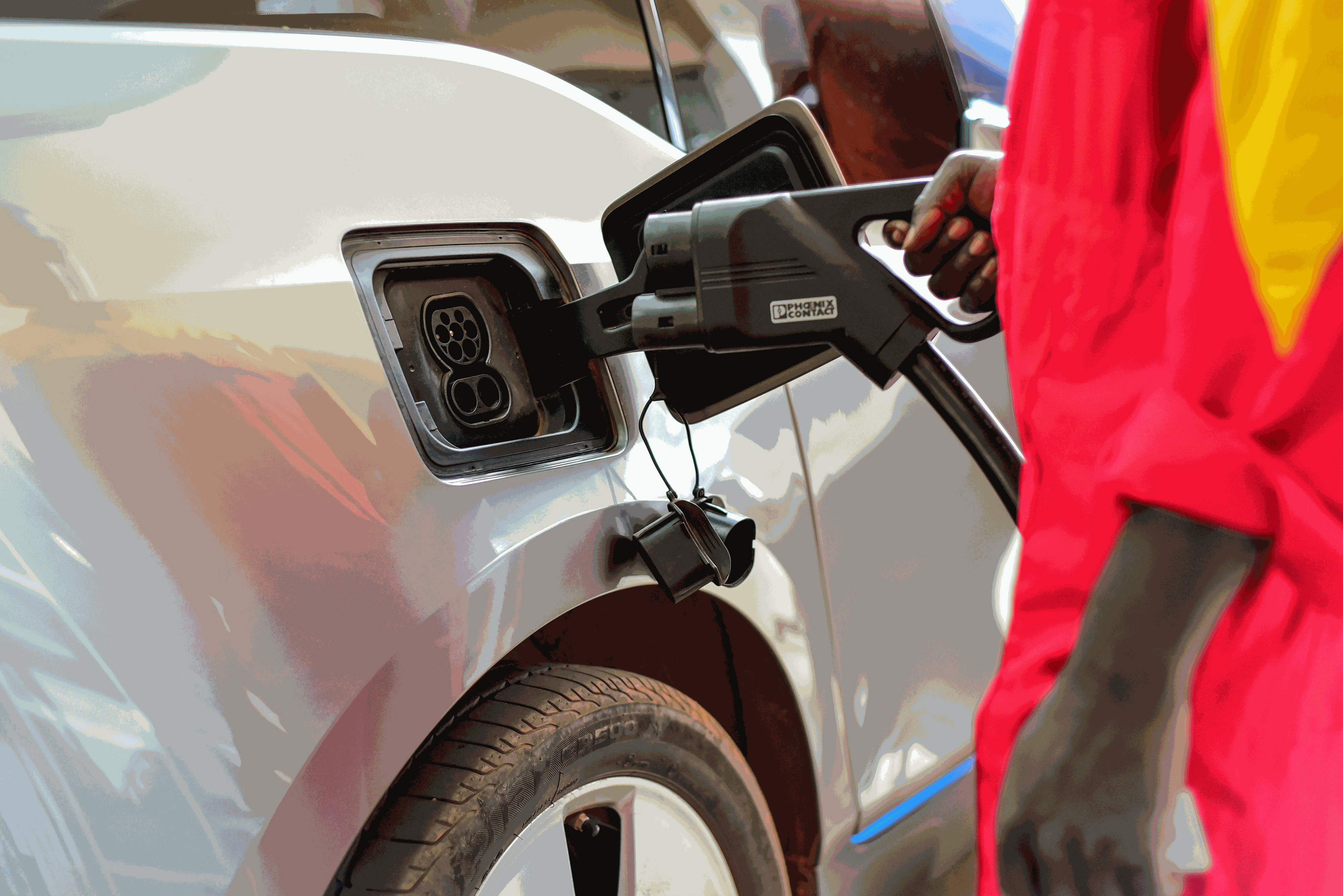Prime
Govt needs Shs6.4 trillion to implement e-mobility strategy

Government plans to install 3,500 charging stations across the country by 2040. Photo / Michael Kakumirizi
What you need to know:
- When fully implemented, government says, e-mobility will generate at least $15m (Shs55.3 trillion) in annual revenue
Government indicates that it will need at least $1.74b (Shs6.4 trillion) in the five years to 2028 to implement the e-mobility strategy that will position Uganda as net source, rather than a consumer of e-mobility tools and solutions.
The strategy, government says, when fully implemented will, by 2040, see Uganda’s e-mobility sector contribute 12.5 percent to gross domestic product, create more than 500,000 green jobs, localise 65 percent of the e-mobility value chain, and reduce transport-based emissions by more than 25 percent.
The investment, according to government will therefore, give a return of at least $15m (Shs55.3 trillion) in annual revenues, of which at least Shs1b will be generated from income from jobs created, and the reduction of transport-based emissions.
In details contained in the National e-Mobility Strategy, which is implemented by the Ministry of Science, Technology and Innovation under the Inter-ministerial Committee on e-Mobility chaired by Dr Monica Musenero, government indicates that the strategy will be implemented over five financial years from June 2023 to June 2028.
“The strategy has a bold target of Uganda fully transitioned to e-mobility in public transport and motorcycles by 2030 and passenger vehicle sales by 2040,” Dr Musenero indicates, noting that this will be realised by creating a robust, self-sustaining and competitive e-mobility ecosystem that will ensure supply chain localisation, innovation, equity and inclusion, integration, adaptability and information and public awareness.
It is also expected to catalyze value addition by promoting domestic manufacturing and localisation of the value chain, create a sustainable and reliable public transport system, and ultimately reduce transport-based carbon emissions by more than 25 percent by 2040 leading to more productive, cleaner, and healthier cities.
The strategy largely seeks to enhance domestic manufacturing and supply of electric vehicles through increased local manufacturing and supply of electric buses, motorcycles, and vehicles with associated parts, components and systems.
It also seeks to promote local manufacturing of electric vehicle batteries and battery energy storage systems, electrify public transport systems, establish electric vehicle charging infrastructure and develop domestic skills and capabilities for the e-mobility value chain.
Other objectives include increase uptake of electric vehicles by the electrification of government’s fleet and developing e-mobility standards, regulations, guidelines, and a code of practice for the e-mobility industry.
The strategy comes at a time when several countries across the globe are shifting their mobility to green energy, which is expected to grow the global market associated with e-mobility from $280b in 2021 to $1.5 trillion by 2028 at a compound annual growth rate of 27.2 percent. In Uganda, according to the Ministry of Science, Technology and Innovation, road transport accounts for 95 percent of passenger traffic and 96.5 percent of freight cargo, which contributes more than 10 percent of greenhouse emissions.
The sector is characterised by an inefficient public transport system that relies on imported end-of-life vehicles with an average age of more than 16 years at first registration.
In notes published in the National e-Mobility Strategy, Dr Musenero noted that Uganda’s heavy reliance on imported near-obsolete petrol and diesel engine-powered vehicles is not only “a huge drain to the economy but poses a significant risk to our socioeconomic transformation, public health, and the environment with Kampala ranked second most polluted city in Africa”.
Partnering with the private sector
Under the National e-Mobility Strategy, government is also working with the private sector and other stakeholders to establish at least 3,500 e-mobility public charging stations by 2040.
The stations will be fitted with more than 10,000 fast chargers - with a charger in every 50-kilometre radius. Government also plans to install e-charging infrastructure at all public offices and public spaces by 2030, support the private sector including fuel stations to establish charging infrastructure, increase electricity generation, grid access, and reliability, and develop standards, guidelines, and regulations for charging infrastructure.
The National e-Mobility Strategy indicates that use of electric vehicles is currently limited because of the high costs involved and difficulties in infrastructure development.
It costs about $2,500 (Shs9.2m) to install a slow charger electric charging station, and about $35,800 (Shs132.2m) for a fast charger as well as miscellaneous fees such as permits and regulations.
Uptake of electric vehicles has increased, with data from Uganda Revenue Authority indicating that a total of 1,694 e-units have so far been imported into Uganda, but of which, only 17 vehicles and 910 motorcycles were imported between 2022 and the first four months of 2024, are 100 percent electric.
The Strategy indicates that several companies have been exploring the establishment of electric charging infrastructure in different parts of the country, among which include Total Energies, which, in collaboration with Motorcare, is leveraging its fuel-filling station network to establish charging stations in different parts of the country.




